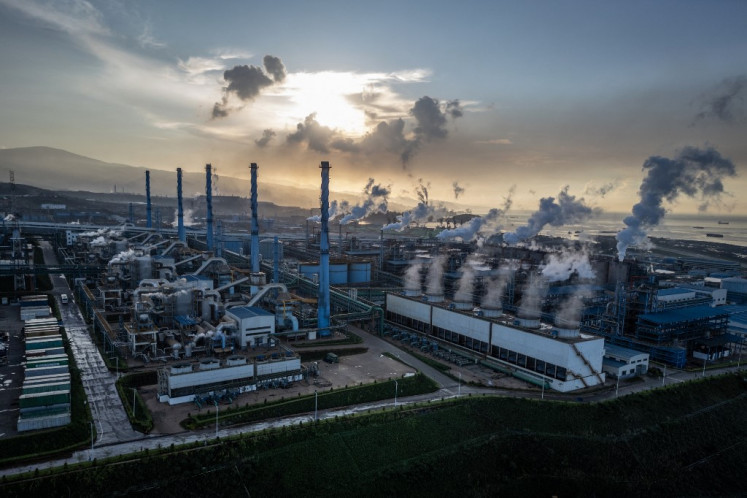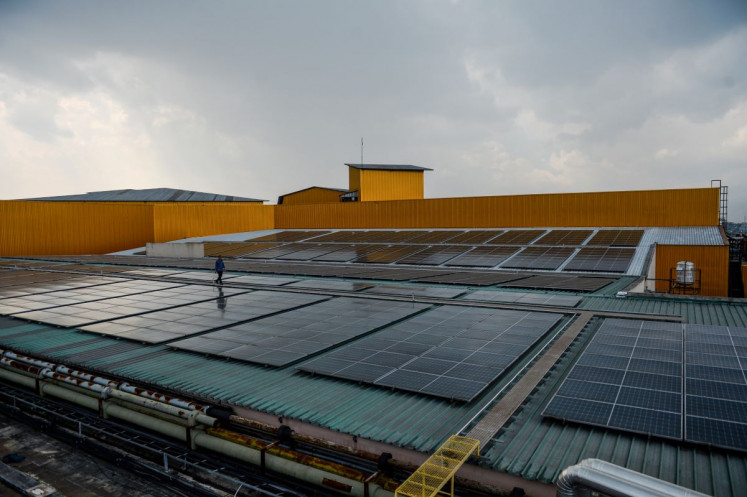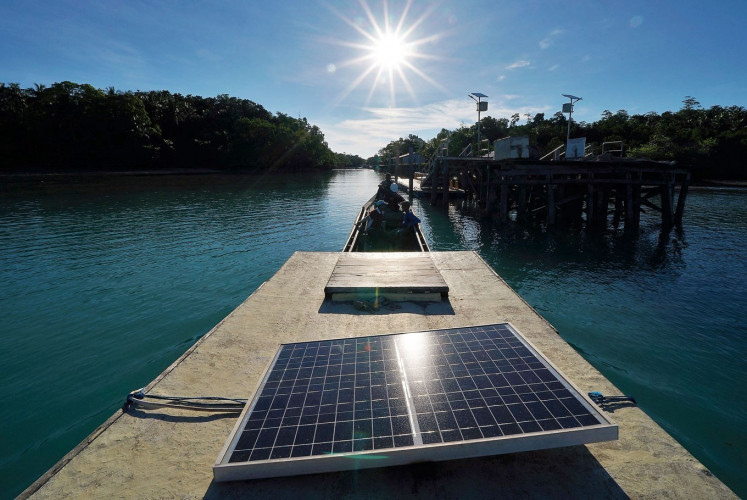Popular Reads
Top Results
Can't find what you're looking for?
View all search resultsPopular Reads
Top Results
Can't find what you're looking for?
View all search resultsPertamina starts delivery of Cepu oil to Cilacap, Balongan
After years of delays, state-owned oil and gas company Pertamina and its partner ExxonMobil have at last begun the delivery of crude oil from Banyu Urip, one of the oil fields in the Cepu oil block in East Java, to the countryâs major refineries
Change text size
Gift Premium Articles
to Anyone
After years of delays, state-owned oil and gas company Pertamina and its partner ExxonMobil have at last begun the delivery of crude oil from Banyu Urip, one of the oil fields in the Cepu oil block in East Java, to the country's major refineries.
The delivery of about 550,000 barrels of crude from a floating storage and offloading (FSO) vessel on Sunday marked the completion of storage and pipeline facilities for the massive block, which have been prepared for years.
The crude oil, which has been stored at the FSO facility since early this year, is part of the crude oil production at the Cepu block, which at present produces 80,000 barrels of oil per day (bopd). The crude oil will be delivered to Cilacap and Balongan refineries in Central and West Java ,respectively, which are operated by PT Pertamina.
'Amid declining production from other sources, Cepu block is a new hope to secure supply for the country's energy security,' said Dwi Soetjipto, the president director of oil and gas giant Pertamina.
Pertamina, through its subsidiary PT Pertamina EP Cepu, holds a 45 percent interest in the Cepu block. ExxonMobil Cepu Limited, which is a subsidiary of ExxonMobil Corporation, holds another 45 percent and serves as the operator of the block.
Meanwhile, the remaining 10 percent is held by the Cepu Block Cooperation Bodies, which consist of locally owned companies run by the administrations of Blora regency, Bojonegoro regency, East Java provincial administration and Central Java provincial administration.
Banyu Urip is currently the backbone of national production. The crude oil output from the field is expected to increase from 80,000 bpod to 205,000 bopd, or around 25 percent of the targeted national output of 825,000 bopd.
'We hope to maximize the production so that we can produce more than 200,000 bopd this year,' ExxonMobil vice president for public and government affairs Erwin Maryoto said.
Banyu Urip's plan of development (POD) was actually approved in 2006 and was due for completion in 2010. However, a number of problems caused delays in the project.
Pertamina EP Cepu president director Amril Thaib Mandailing said that changes in the planning had mainly contributed to the delays.
'Soon after the POD was approved, we were asked to assess the usage of an onshore tank-farm in Tuban rather than the FSO. We did the study and found it wouldn't be economic. We lost six months for nothing,' Amril said.
In addition to the deliberation between on-shore storage facilities and floating storage, uncertainty was also caused by the local government's policy regarding the minimum local content in the Banyu Urip project. Acquisition of around 250 hectares of land in Bojonegoro, where the main facility would be established, was also an issue.
The central processing facility is now 96 percent complete and is scheduled to be finished by June.
Thus, since the approval of its POD in 2006, Banyu Urip will have gone through the leadership of two presidents, four energy and mineral resources minsters and four presidents and general managers of ExxonMobil Indonesia before its completion.
While praising the final completion of the project, Energy and Mineral Resources Minister Sudirman Said hoped that other projects would not have to go through a similar prolonged process.
'We've all learned from Banyu Urip and I believe other projects can be done more quickly. Don't let the next projects, such as Tiung Biru, take this long,' he said.










